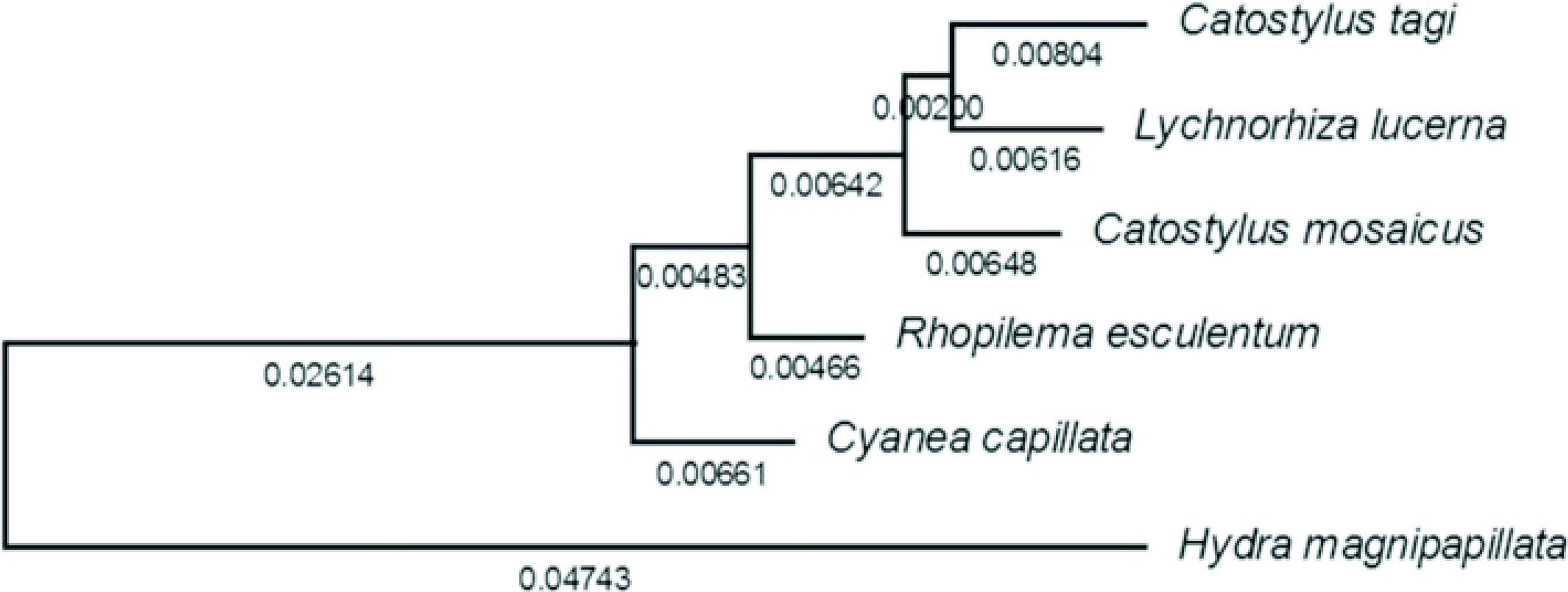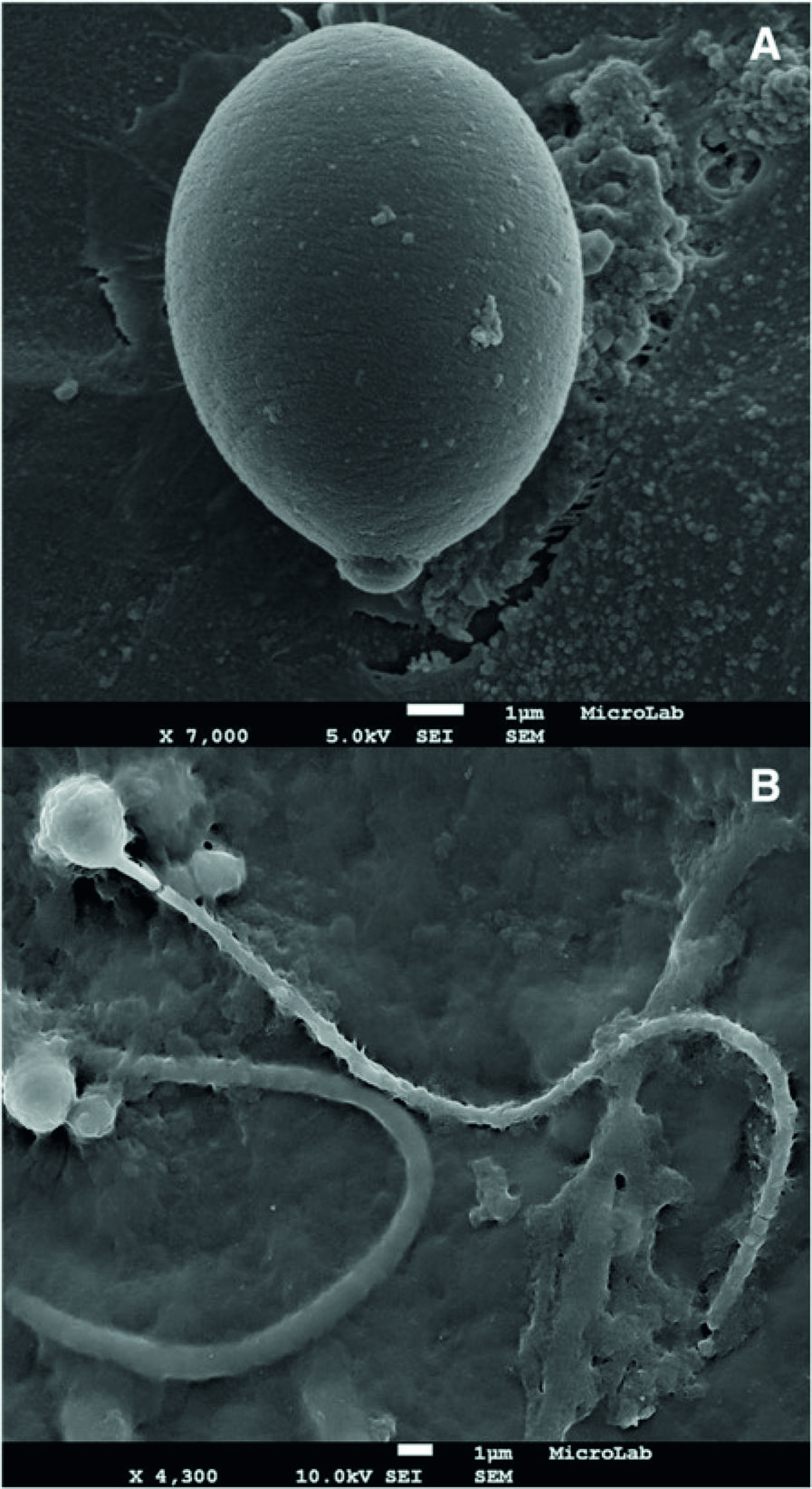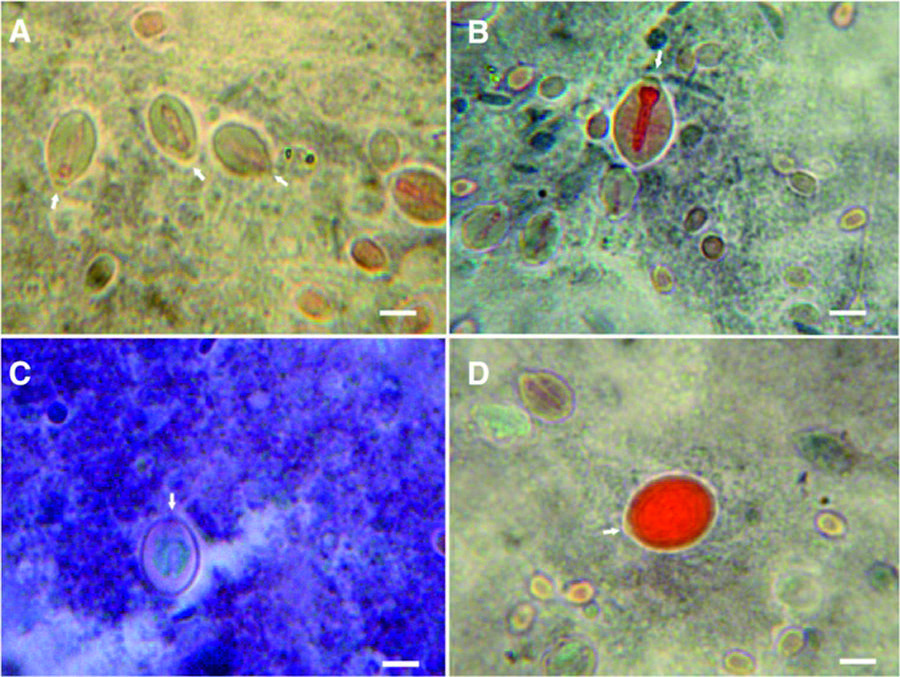Abstract
Background
More than 200 Scyphozoa species have been described, but few have been properly studied regarding their chemical and genetic characteristics.Catostylus tagi, an edible Scyphozoa and the sole European Catostylidae, occurs in summer at Tagus and Sado estuaries. Neither a systematic comparison between the two Catostyluscommunities nor a chemical approach on their nematocytes had been carried out yet.
Methods
In order to achieve these purposes, optimisation of DNA extraction and of histochemical staining procedures were developed.Catostylus specimens from Tagus and Sado estuaries were compared by ribosomal 18S, 28S, and ITS1 partial sequencing. The morphochemistry of nematocytes was studied by optical and electronic microscopy.
Results
Macroscopic and molecular results indicated that both communities belong to the same species, C. tagi. The hematoxylin and eosin staining allowed the visualisation of nematocyst genesis and indicated a basic character for the macromolecules on the shaft of euryteles and on the tubule of isorhizae and birhopaloids. By Masson’s trichrome procedure, the basic properties of the tubules were confirmed and a collagenous profile for the toxins was suggested. Results of the alcian blue staining showed that the outer membrane of nematocyte may consist of macromolecules with acidic polysaccharides, consistent with NOWA and nematogalectin glycoproteins detected in Hydra, but also with poly-gamma-glutamate complex, chitin-like polysaccharides and hyaluronic acids. Through the von Kossa assays, calcium was detected; its position suggested interactions with polysaccharides of the membrane, with proteins of the contractile system or with both.
Conclusions
The optimisation of sample preparation for DNA extraction may facilitate further studies on little known jellyfish species. The improvement of the smear procedure simplified the use of stained reactions in zooplankton. Moreover, it was shown that good slide images might be acquired manually. The development of specific reactions, with traditional dyes and others, can give important contributions to clarify the chemical nature of the components of nematocytes. The characterisation of nematocyst toxins by staining tests is a goal to achieve.
Genomic DNA extraction; 18S 28S ITS1 ribosomal DNA; Structural macromolecules of nematocytes; Catostylus tagi jellyfish






